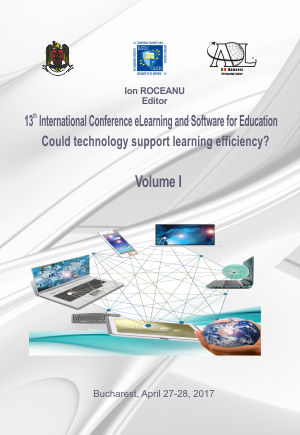BLENDED LEARNING IN HIGHER EDUCATION - A ROMANIAN STUDENTS PERSPECTIVE
BLENDED LEARNING IN HIGHER EDUCATION - A ROMANIAN STUDENTS PERSPECTIVE
Author(s): Mihai Felea, Mihaela Dobrea, Irina AlbăstroiuSubject(s): Social Sciences, Education
Published by: Carol I National Defence University Publishing House
Keywords: Blended learning; Online learning; Higher education; Romanian students; Perceptions; Attitudes
Summary/Abstract: System of higher education is under permanent development and blended learning is a format rapidly spreading in academic area around the world. Increasing numbers of universities are adopting blended learning because it integrates traditional face-to-face with online learning. Blended learning offers opportunities to incorporate different resources like books, multimedia files, web pages and innovative learning activities. Interactive assignment, chat and forum, quiz, survey, workshop and social networking are examples of activities that teachers can include in their courses. On the other side, online learning tools can be expensive and unacceptable for some of the teachers and students who resist to change or afraid of new technology. With the rapid development and wide application of e-learning, online and in-class teaching methods enhances each other and offers many benefits for students and teachers. The purpose of this paper is to reveal the advantages and applicability of the blended learning in higher education sector by reviewing the relevant literature, and then to investigates students’ perceptions and attitudes towards blended learning tools used by The Bucharest University of Economic Studies. An exploratory research based on questionnaire was conducted among the students from the Faculty of Business and Tourism. Results of the research showed that the students have positive attitudes towards blended learning. The findings also indicated that blended learning tools do enhance students’ learning experiences and learning outcomes. Based on these results, suggestions for future research directions and recommendations for both students and teachers interested to combine face-to-face and online learning were formulated.
Journal: Conference proceedings of »eLearning and Software for Education« (eLSE)
- Issue Year: 13/2017
- Issue No: 01
- Page Range: 401-407
- Page Count: 7
- Language: English

